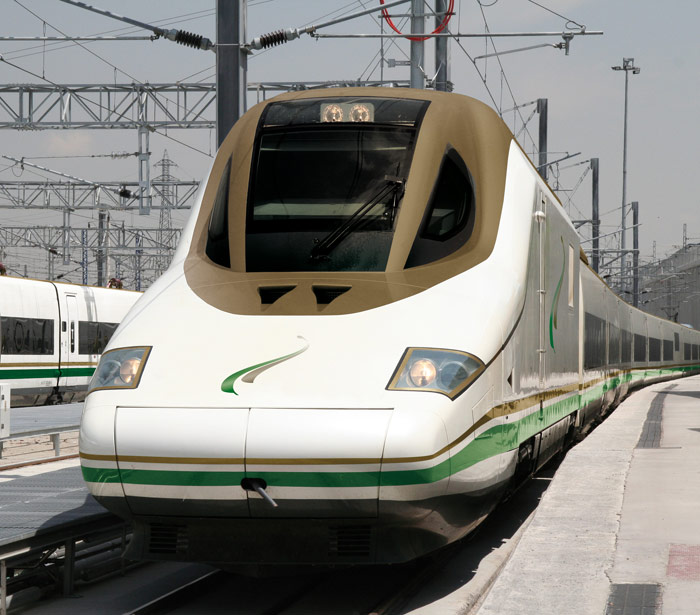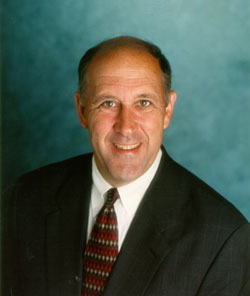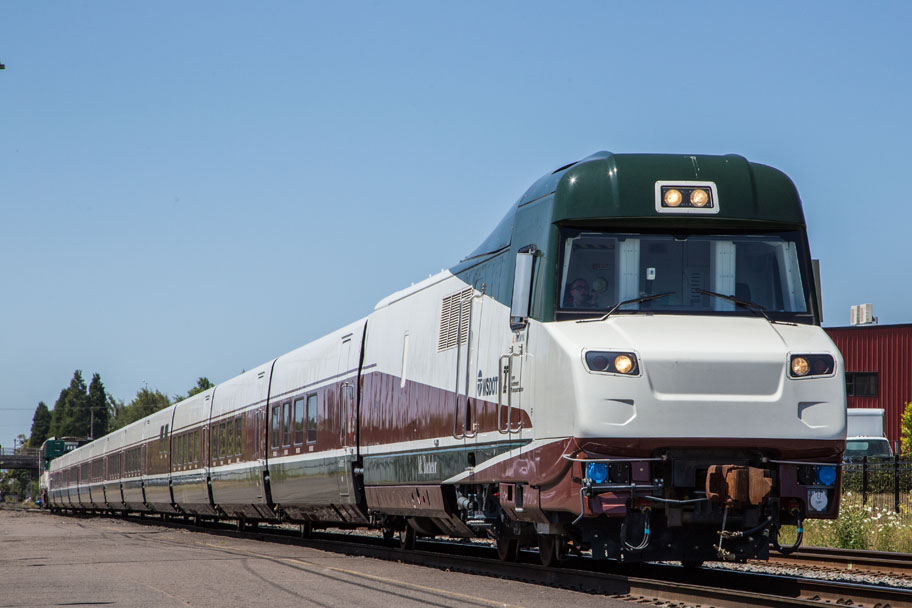PRESS Kit
Click on the image to download the Press kit.
PRESS Kit
Click on the image to download the Press kit.
High-Speed Rail Mega Contract
The Spanish consortium led by Talgo, Renfe, Adif and OHL has been awarded the Very High-Speed Rail Saudi Arabia mega-contract
• This award consolidates Talgo’s worldwide position in the very high-speed rail market.
 Madrid, October 26, 2011 - A Spanish consortium of eleven companies has been awarded a $9 billion turn-key very high-speed rail project to connect the Saudi Arabian Cities of Medina and Mecca. Talgo’s role in the project entails the design, manufacture and maintenance of the trainsets for a value of $2.4 billion, which may increase to $3.4 billion if the option for additional trainsets options is executed.
Madrid, October 26, 2011 - A Spanish consortium of eleven companies has been awarded a $9 billion turn-key very high-speed rail project to connect the Saudi Arabian Cities of Medina and Mecca. Talgo’s role in the project entails the design, manufacture and maintenance of the trainsets for a value of $2.4 billion, which may increase to $3.4 billion if the option for additional trainsets options is executed.
The project relies on Talgo’s rolling stock technology and consolidates the company’s position in the very high-speed rail market. The Saudi Arabian authorities have taken in consideration the success of the high-speed rail model in Spain. Such award confirms that Talgo is not only a company with a successful line of products that are sold very well in its domestic market, but also that its state-of-the-art designs are internationally acclaimed. Talgo’s expansion in the international market started in 1992 with sales in Germany, followed by sales in the USA in 1994. From 2007 to 2010 Talgo was also awarded major contracts in Kazakhstan, Uzbekistan, USA and Russia. These latest developments have consolidated Talgo’s commitment to be a worldwide rail manufacturer. In 2010, 83% of the new contracts awarded to Talgo came from customers located outside of Spain.
According to Chairman Carlos de Palacio, “The award of this major contract is a milestone for the Spanish rail industry and rail technology and allows Talgo to fulfill its internationalization strategy. Further, this award adds competitiveness to bid in international high-speed rail projects”. Currently Talgo is working to develop business in 25 different countries.
Trainset offered
The trainset offered is the very-high-speed Talgo 350 (known in Spanish as “El Pato” for its duck head shape). It is the latest high-speed train sold in Spain, which enjoys 50% of the market share in this segment connecting the city pairs of Madrid-Málaga, Madrid-Valencia, Madrid-Valladolid, Barcelona-Málaga and Barcelona-Sevilla.
The Spanish consortium has been awarded 35 trains including the maintenance related services for this equipment. There is a future option to purchase 23 additional trains.
Trains will be manufactured in the various Talgo plants in Spain.
Procurement
The Haramain High-speed Railway (HHR) is a 450 km (281 mile) high-speed rail corridor that connects Medina and Mecca. This corridor is intended for pilgrims who travel between the two Muslim holy cities. It is estimated that during pilgrimage periods, the trains will have a daily average occupancy of 166.000 passengers.
The project consists of the manufacturing of rolling stock and the development of a "super structure" that includes track, catenary and signaling systems. The project also includes the construction of other civil work elements such as building a control operational plant, high and low voltage supply network, catenary, track, signaling, etc. Operation and maintenance of the aforementioned systems and trainsets are also included in the scope.
The public procurement process started in October 1, 2006 and was divided into two stages: one for civil works and another for the manufacturing of the rolling stock and super-structure, operation and maintenance. In this second phase four consortiums, in addition to the Spanish consortium were pre-qualified: German, Korean, Chinese and French. The Spanish and the French consortiums were shortlisted. A stronger financial and technical package tipped the balance in favor of the Spanish consortium.
Spanish consortium
The Spanish consortium is made of Talgo, other eleven Spanish companies (RENFE, Adif, OHL, Copasa, Dimetronic, Inabensa, Cobra, Indra, Imathia, Ineco and Consultrans) and two local partners (Alshoula and Al Rosan) which will operate these lines during the twelve years following the start of rail passenger services.
This is the first time that the Spanish high-speed model will be implemented in a joint offer of public and private companies. For Spain, this project represents an export of innovative high-speed rail technologies valued at approximately 6.500 M €. This project will result in job creation and economic development not only for Spanish companies but also for local companies.
Governor Doyle Welcomes Talgo Assembly Facility to Milwaukee
Will Create 125 Direct Jobs in Wisconsin Manufacturing and Assembling High Speed Trains
 MILWAUKEE – Governor Jim Doyle announced today that Talgo will locate its U.S. high-speed passenger rail manufacturing and assembly facility at the former Tower Automotive site in Milwaukee, creating 125 direct jobs in Wisconsin and about 450 indirect jobs through vendors throughout the Midwest. The announcement strengthens Wisconsin’s status as a national leader in high speed passenger rail manufacturing and builds on the Recovery Act’s $823 million investment in the state’s high speed rail network.
MILWAUKEE – Governor Jim Doyle announced today that Talgo will locate its U.S. high-speed passenger rail manufacturing and assembly facility at the former Tower Automotive site in Milwaukee, creating 125 direct jobs in Wisconsin and about 450 indirect jobs through vendors throughout the Midwest. The announcement strengthens Wisconsin’s status as a national leader in high speed passenger rail manufacturing and builds on the Recovery Act’s $823 million investment in the state’s high speed rail network.
“I’m proud Talgo will locate its U.S. rail car assembly facility at the former Tower Automotive site in Milwaukee,” Governor Doyle said. “The new Talgo facility will create 125 direct jobs in our state, manufacturing and assembling Talgo trains for Wisconsin and states across the country. Through the Recovery Act and this facility, Wisconsin will see real economic benefits of high speed rail for generations to come. High speed rail is the future of transportation – and it is a really great thing for the state of Wisconsin to be leading the way.”
“Talgo has made a business decision to locate the manufacturing facilities in the Milwaukee Tower Automotive site after careful consideration of the sites presented to us in a quite open process,” Talgo CEO and President Antonio Perez said. “Our analysis included the following criteria: economic conditions, technical/operational conditions,logistics, cost of living, training facilities in the vicinity and availability of a skilled workforce. We believe that the Tower site will allow us not only to deliver the train sets on time and with our high standards of quality, but it will alsoallow for future growth. We appreciate the effort put forth by all the other communities that expressed interest."
“Once again, we have demonstrated that by working together, by using every appropriate economic developmenttool, and by selling Milwaukee’s strengths we can attract jobs to our community,” Milwaukee Mayor Tom Barrett said. “I am confident our partnership with Talgo will produce benefits throughout the region.”
In July, Governor Doyle announced the state’s agreement with Talgo to purchase two train sets for its Hiawatha line and an agreement to establish the company’s assembly and maintenance facility in the state. Not only will Wisconsin’s Talgo trains be built in Milwaukee, the Talgo rail car assembly plant will support the delivery of Talgo trains throughout the country and create hundreds of jobs through its supply chain vendors in the Midwest and U.S. Last week, the state of Oregon announced it has purchased two Talgo train sets that will be assembled in Wisconsin – saving both states millions of dollars.
In January, Governor Doyle announced Wisconsin will receive $823 million in American Recovery and Reinvestment Act funds to build high-speed rail service to connect its centers of commerce and create thousands of jobs. Wisconsin is receiving $810 million to build high-speed passenger rail service between Milwaukee and Madison, $12 million to improve service between Chicago and Milwaukee, and $1 million to make final determinations on a route between Wisconsin and the Twin Cities – the next step toward connecting Chicago, Milwaukee and Madison with the Twin Cities. The project is estimated to create thousands of jobs in Wisconsin in fields like construction, engineering, design and supply.
Governor Doyle was joined today for the job creation announcement by Antonio Perez, CEO and President of Talgo; Milwaukee Mayor Tom Barrett; Javier Ruprez, Consul General of Spain; Alderman Willie Wade of the Milwaukee Common Council; and Tim Sheehy, a member of the Milwaukee 7. The Governor thanked the leaders from Talgo, Milwaukee and the Congressional delegation for working together to make the project a reality.
ODOT Purchases Talgo Passenger Trains
New train cars will enhance passenger train service in the Willamette Valley
 SALEM—The Oregon Department of Transportation has negotiated the purchase of two new passenger trains from Talgo-America. Each train seats 285 people and will provide continued Amtrak Cascades passenger service in the Pacific Northwest rail corridor between Eugene and Vancouver, British Columbia.
SALEM—The Oregon Department of Transportation has negotiated the purchase of two new passenger trains from Talgo-America. Each train seats 285 people and will provide continued Amtrak Cascades passenger service in the Pacific Northwest rail corridor between Eugene and Vancouver, British Columbia.
The trains, which cost $36.6 million, will be assembled at a new Talgo plant in Wisconsin with a majority of American-made components. There are 13 cars per train. The Oregon Transportation Commission approved use of American Recovery and Reinvestment Act stimulus funds for the purchase on July 23, 2009. By pooling the train purchase with Wisconsin,
Oregon saved about $6 million.
Oregon’s current passenger rail service relies on trains owned by the Washington state and Amtrak. As Washington state fulfills its plans to increase daily Portland-Seattle service, the trains would no longer be available to Oregon.
“The commission’s decision to buy trains will assure continued passenger rail service in the Willamette Valley and provide the potential for increased service in Oregon at some future date,” said ODOT Director Matthew Garrett.
When delivered in 2012, the Oregon-owned trains will join five older Talgo-America train sets;Washington state owns three, and Amtrak owns two.
Amtrak’s Cascades and long-distance train services have a positive effect on the economy. Each year they purchase $1.2 million worth of goods and services and sustain 73 Oregon jobs paying $4.77 million in wages. Eventual expansion of Portland-Eugene service will require adding more jobs and purchasing more goods and services.
“This is a significant step forward for Oregon and the Pacific Northwest,” said President and Chief Executive Officer of Talgo-America Antonio Perez. “These new trains will greatly enhance service in Oregon and on the entire Cascades corridor.”
“Amtrak applauds ODOT’s forthcoming procurement of Talgo equipment,” said Joe McHugh, Amtrak’s vice president of government affairs and corporate communications. “Since the debut of the Amtrak Cascades in 1999, we have created strong partnerships with Oregon, Washington and Talgo to provide reliable, attractive and environmentally friendly intercity rail service in the corridor,” he said.
Since 1994, ridership has increased 823 percent on Cascades trains. In Oregon, more than 186,000 passengers rode trains in 2008.
The new trains will be updated versions of Talgo-made trains presently serving the Northwest.Amenities include WiFi capability, a Bistro (food and beverage) car, a business class section with roomier seats, and baggage car bicycle racks. Although the corridor’s current top speed is 79 mph, the new trains are designed to run up to 125 mph. Any diesel-electric locomotive can pull them.
Governor Doyle Announces Agreement with Talgo
To Bring New Trains, Assembly and Maintenance Facilities to Wisconsin
MADISON - Governor Jim Doyle today announced an agreement with the Spanish train manufacturer Talgo to put two Talgo train sets into service in Wisconsin and to establish new assembly and maintenance facilities in the state. The rail car assembly plant will support the delivery of Talgo trains throughout the country.
“We are pleased to welcome Talgo to Wisconsin,” Governor Doyle said. “I can’t wait for our Midwestern travelers to experience first-hand the comfort, modern amenities and expanded seating capacity on these wonderful trains. In addition, the company will use Wisconsin workers and skills to assemble and maintain Talgo trains. This relationship has the potential to create even more jobs, gives the state a major role in the growth of an exciting transportation industry and helps us move forward with our vision for high speed passenger rail service in the Midwest.”
Talgo officials joining Governor Doyle to make the announcement in Madison included Antonio Perez, CEO and president of Talgo Inc., the company’s U.S. subsidiary, and Jose Maria Oriol, CEO and president of Patentes Talgo, Spain.
"After 14 years of track record in the US market and having participated in the Midwest Regional Rail Initiative in 2000, Talgo is very excited to have its equipment selected again as the most suitable for the Madison-Milwaukee-Chicago Corridor,” Antonio Perez said. “We are very excited with the opportunity of manufacturing high speed trains in Wisconsin and helping to bring economic development and the option for proven intercity passenger rail equipment to the Midwest region. We appreciate the leadership from Governor Doyle in this very important step towards accomplishing the new Administration's Vision."
Wisconsin will purchase two, 14-car train sets for $47 million. The agreement provides an option to buy two additional train sets if the state is successful in securing federal American Recovery and Reinvestment Act funding for the extension of passenger rail service from Milwaukee to Madison.
Talgo cars are made of aluminum alloy with welded seams to form a structural frame making them lighter weight and stronger than traditional rail cars. The rail cars use passive tilt technology that allows the cars to navigate curves at higher speeds with less car tilting and to ride smoother at higher speed, greatly enhancing passenger comfort.
The trains will be put into service on the Amtrak Hiawatha Service with the cars pulled by existing locomotives. Each train set provides a seating capacity of 420 compared to the current capacity of 350. The popular Amtrak Hiawatha Service provides daily trips between Chicago, Illinois, and Milwaukee, Wisconsin. Ridership on the Hiawatha Service continues to grow, with more than 766,000 riders in 2008, a 24% increase over 2007.
“I’m delighted the State of Wisconsin has taken the bold step to purchase modern, new passenger rail equipment,” said Amtrak Chairman of the Board Thomas Carper. “Amtrak has had a great response to Talgo train equipment on its Cascades Service in the Pacific Northwest, and we are confident travelers on the Hiawatha Service will have the same reaction. Wisconsin has always been one of Amtrak’s strongest state partners, and we congratulate Governor Doyle on this important and exciting initiative that will bring new levels of comfort and convenience to intercity travelers.”
The locations of the assembly and maintenance facilities have not yet been determined, but are likely to be in south central or southeastern Wisconsin. Together, the assembly and maintenance facilities are expected to create about 80 jobs for Wisconsin workers, with the potential for more jobs as operations grow.
Aluminum alloy structural frame parts for the Talgo trains will be manufactured in Spain and then shipped to Wisconsin for assembly. Talgo will be working with Wisconsin and other U.S. vendors to supply parts for outfitting the trains.
The dedicated rail car maintenance facility will provide ongoing service for equipment used in the Midwest. Talgo currently operates a maintenance facility in Seattle, Washington, to service Amtrak Cascades trains.